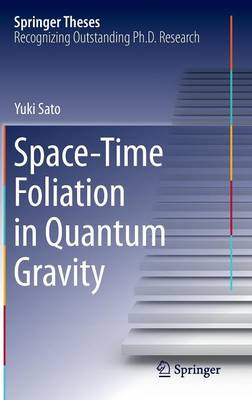Springer Theses
2 total works
In this thesis, the author considers quantum gravity to investigate the mysterious origin of our universe and its mechanisms. He and his collaborators have greatly improved the analyticity of two models: causal dynamical triangulations (CDT) and n-DBI gravity, with the space-time foliation which is one common factor shared by these two separate models.
In the first part, the analytic method of coupling matters to CDT in 2-dimensional toy models is proposed to uncover the underlying mechanisms of the universe and to remove ambiguities remaining in CDT. As a result, the wave function of the 2-dimensional universe where matters are coupled is derived. The behavior of the wave function reveals that the Hausdorff dimension can be changed when the matter is non-unitary.
In the second part, the n-DBI gravity model is considered. The author mainly investigates two effects driven by the space-time foliation: the appearance of a new conserved charge in black holes and an extra scalar mode of the graviton. The former implies a breakdown of the black-hole uniqueness theorem while the latter does not show any pathological behavior.
Quantum Oscillations and Charge-Neutral Fermions in Topological Kondo Insulator YbB₁₂
by Yuki Sato
Electronic state of every solid is basically classified into two categories according to its electrical responses: insulator or metal. A textbook of modern solid state physics explains that shape of a Fermi surface plays a key role in most physical properties in metals. One of the well-established experimental methods to detect a Fermi surface is measurement of quantum oscillations that is a periodic response of physical quantities with respect to external magnetic fields. As insulators do not host Fermi surface, it is believed that they do not exhibit any quantum oscillations.
This book presents a comprehensive review of recent observations of quantum oscillations in the Kondo insulators, SmB6 and YbB12, and discusses how the observations are demonstrated by a newly proposed mechanism where emergent charge-neutral fermions exhibit quantum oscillations instead of bare electrons. It also focuses on topological properties of Kondo insulators, and demonstrates that YbB12 hosts asurface metallic conduction owing to its non-trivial band structure. Further it presents the experiments of specific heat and thermal conductivity in YbB12 down to ultra-low temperature to discuss the possible low-energy excitations from a Fermi surface of neutral fermions. The demonstrated gapless and itinerant fermionic excitations, that is the significant contribution from charge neutral fermions, violates Wiedemann-Franz law. The discoveries point out a highly unconventional phase of quantum state—electrically insulating but thermally metallic—realized in the bulk of topological Kondo insulators.

